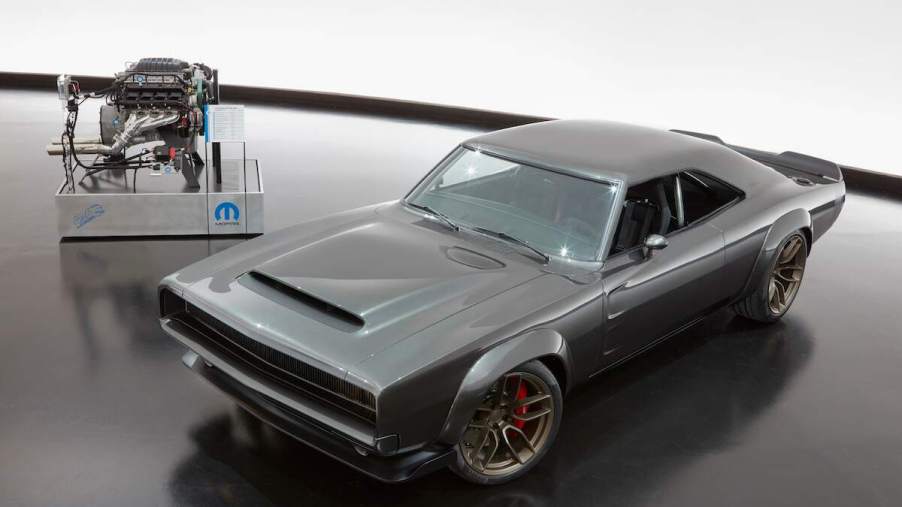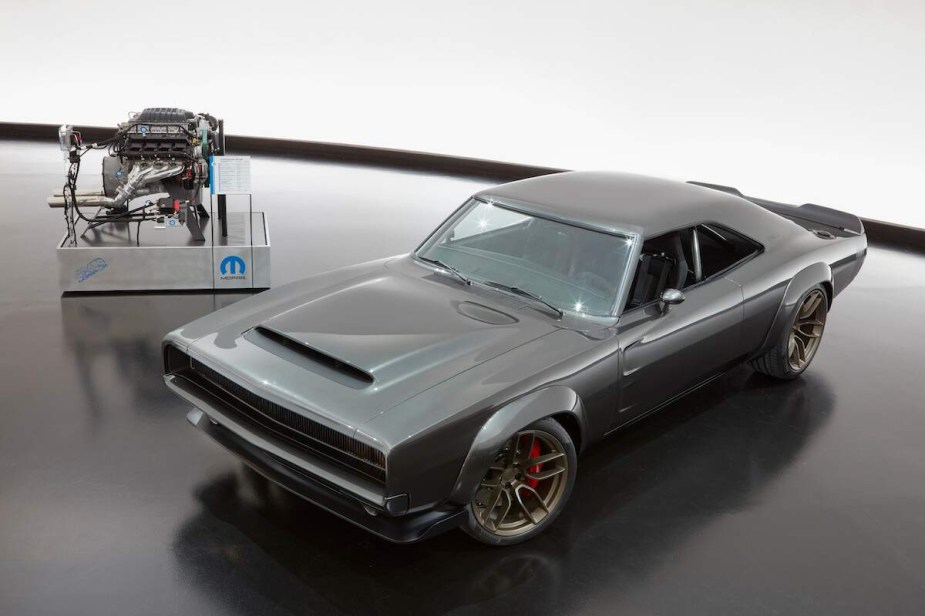
How Much Horsepower Do Dodge Hellephant V8 Series Engines Produce?
Chrysler’s muscle car roots run deep, with the powerful “Hemi” V8s dating back almost seventy years. The 426 Hemi is perhaps the most famous and was used by various Dodge and Plymouth cars like the Charger and Road Runner. More recently, the Hemi experienced a resurgence thanks to the Chrysler 300, Dodge Challenger, and Dodge Charger. The new Hemi engines are more advanced and more powerful than the famed 426 but lack none of the ferocity. But what about the Hellephant?
Recently Mopar revealed a series of even more powerful Hemi crate engines at SEMA last fall. Offered through Chrysler’s Direct Connection, these engines include a Hurricane inline-six and a Hellephant V8.
A short but powerful history of the Hellephant V8

According to J.D. Power, Mopar introduced the Hellephant crate engine in 2018 by dropping it in a 1968 Dodge Charger Restomod. The name combines Chrysler’s modern Hellcat engine used in modern SRT production cars and the original Hemi 426, known as the Elephant.
The Hellcat name was used in honor of the Hellcat fighter from World War II and as a response to the Ford Mustang Cobra. The original Hemi got its Elephant nickname because it combined large size, weight, and raw power. Combine the two, and Hellephant is an apt name for a powerhouse that produces monster horsepower out of the box.
How much horsepower can a Hellephant produce?
In cars like the Dodge Charger and Dodge Challenger, the Hellcat engine produces 707 stock hp. Out of the box, or crate, the Hellcrate engine (Direct Connection’s name for the Hellcat) produces 707 hp or 807 hp in Redeye form. That makes it the most powerful crate engine capable of running on regular gasoline.
But it’s still not the most powerful version of the modern Hemi. That honor goes to the Hellephant, which, when supercharged, produces between 900 and 1,100 hp depending on tune and the type of fuel used.
Features of the new engines
Introduced in 2019, the original Hellephant produced 1,000 hp. Today, Mopar has expanded the Hellephant line, offering new variants according to HotCars, including:
- The C30 “entry-level” engine displaces 376 cubic inches. Using a cast-iron block, large throttle body, hardened rods and pistons, and an improved valvetrain, this engine produces around 900 hp.
- The C170 builds on the C30 using an upgraded fuel system with flex-fuel capability. It can deliver over 1,000 hp on E85 fuel.
- The A30 increases the engine displacement to 426 cubic inches and includes forged aluminum pistons. A revised supercharger paired with a 3.17-inch pulley bumps the power to 1,000 hp.
- Finally, the A170 is set up to run on E85 fuel and can produce over 1,100 hp.
All of this power does not come cheap. The Hellephant starts at an MSRP of $29,995 and increases to almost $35,500 when you add accessories and parts like a wiring harness, ECM, accessory drive kit, and air conditioner. However, if you’re building a Restomod Charger or Plymouth Barracuda and want the biggest, badest, most powerful engine around, there is no substitute.



